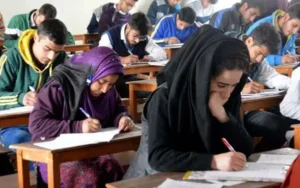Kashmir to Kanyakumari: Dream of Seamless Rail Connectivity Now a Reality

By BY Syed Wajahat & Shahid Ul Islam
In a landmark development that redefines connectivity and national integration, Prime Minister Narendra Modi today flagged off the first-ever direct train service connecting the Kashmir Valley to the rest of India, marking the completion of the long-awaited Udhampur-Srinagar-Baramulla Railway Line (USBRL).
This historic milestone brings to life the once-distant dream of “Kashmir to Kanyakumari,” transforming it from a symbolic slogan into a tangible reality—on rails.
A Legacy of Isolation Ends
For decades, Jammu and Kashmir remained geographically and emotionally distant from the Indian mainland, hindered by inadequate infrastructure and seasonal inaccessibility. The only major road link—National Highway 44 (NH-44)—is often closed during winter due to snowfall and landslides, cutting off the Valley from essential supplies and services.
This isolation had deep social and economic consequences, especially for youth and professionals who faced both logistical and psychological hurdles in seeking opportunities across the country.
A Vision Fulfilled with Steel and Resolve
The USBRL project, once dismissed as impossible due to the region’s rugged Himalayan terrain and security challenges, has finally been completed. With tunnels carved through mountains and bridges spanning deep gorges, the railway is not just an engineering marvel—it is a testament to national resolve.
Speaking at the inauguration, Prime Minister Modi called it “a historic moment of integration,” adding, “Mountains must not be barriers to progress—they must become its pathway.”
With the new direct rail connection, Kashmiris can now travel seamlessly to cities like Delhi, Mumbai, Bengaluru, and beyond, with unprecedented ease and reliability.
More Than Just Tracks: Transformative Impact on Ground
Year-Round Connectivity: Unlike the often-disrupted highway, the railway ensures uninterrupted travel throughout the year, benefiting students, patients, professionals, and tourists alike.
Economic Growth: Kashmiri artisans, farmers, and traders can now transport their goods—handicrafts, dry fruits, apples, and more—across India more efficiently and affordably.
Tourism Boost: Easier access to the Valley is expected to significantly boost tourism, a vital pillar of the region’s economy.
Cultural Integration: The railway is seen not just as a physical link but an emotional bridge, fostering stronger ties between Kashmir and the rest of the nation.
Youth Empowerment: Thousands of local engineers, technicians, and workers played a key role in building the line, instilling a renewed sense of pride and belief in the region’s potential.
Voices from the Valley: Youth Speak Out
Local students and young professionals have hailed the project as “a new dawn of possibilities.” In a joint statement, a group of student activists and law students emphasized that while the rail line is a major step forward, “much remains to be done in areas like education, employment, and youth development.”
“We hope this is just the beginning,” the statement read. “This is about more than just infrastructure—it’s about trust, unity, and common progress.”
Symbol of National Commitment
The USBRL stands as a bold message: Kashmir is not on the periphery but at the heart of India’s development story. The blend of engineering excellence and political will has turned what once seemed a dream into a durable and lasting reality.
The Valley, long called “Heaven on Earth,” is now more accessible than ever—not just in postcards and poetry, but by train.
“Kashmir to Kanyakumari is no longer a slogan. It is now a reality.”
About Author:
The both authors, is the student of law





